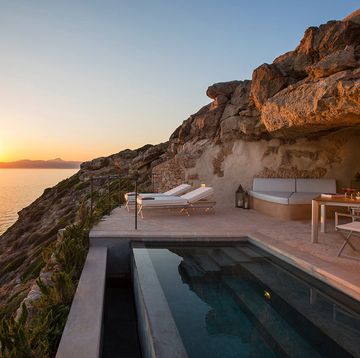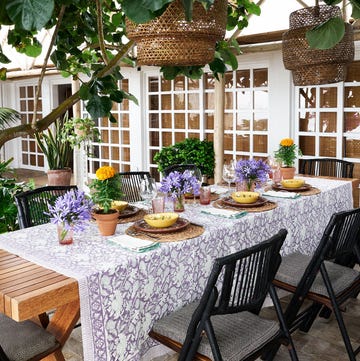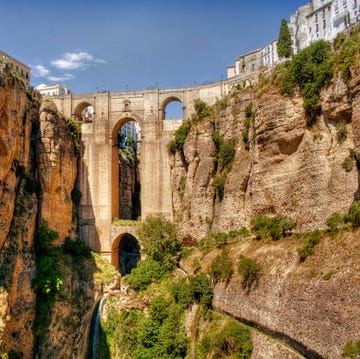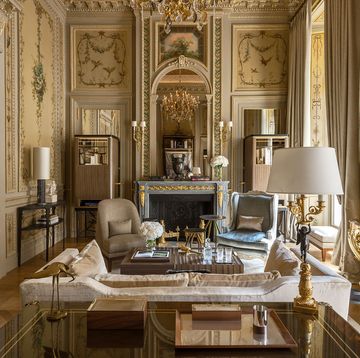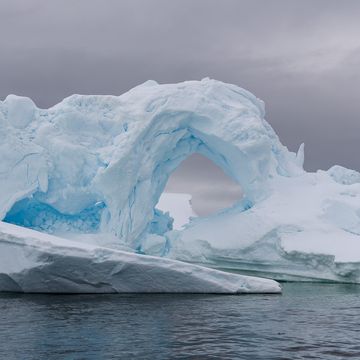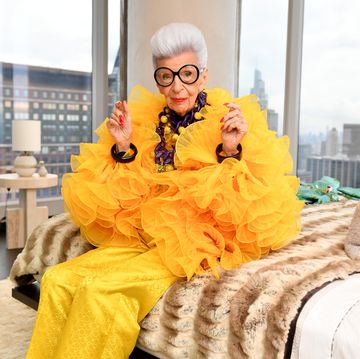A Closer Look at This Year's Oscar Nominees for Best Production Design
The Academy Award–nominated sets, ranging from 1920s Chicago to a futuristic city, are realistic, but the competition is getting just as real.

Each spring, the team here at ELLE Decor looks forward to seeing which films the Academy Awards deem worthy of Best Production Design. We’re often amazed at the ability of set designers to capture a particular moment in time or evoke a precise mood through evocative interiors, architectural styles, or entirely CGI sets. This year’s nominees, in particular, seem to capture it all, from a sweltering Chicago summer to present-day London to a city of the future. Here, we take a closer look at the 2021 Oscar nominees.
The Father
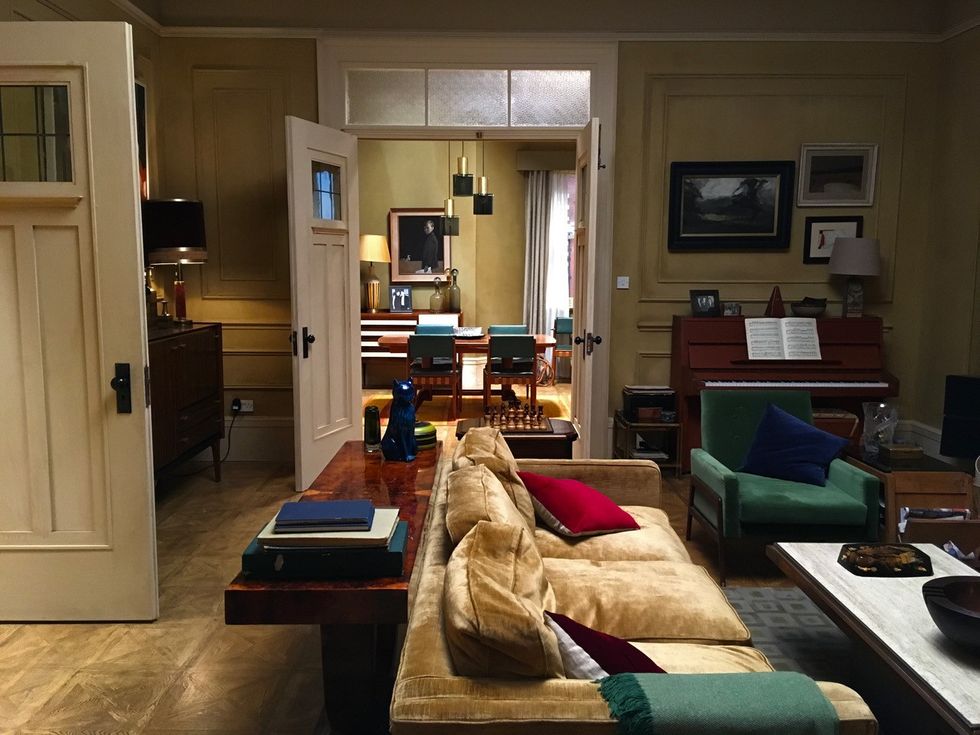
Production design by Peter Francis; set decoration by Cathy Featherstone.
The Father, directed by Florian Zeller, follows protagonist Anthony (Anthony Hopkins) and his daughter Anne (Olivia Colman) as they navigate a heartbreaking Alzheimer’s diagnosis. Another critical character is a single apartment, where most of the drama takes place. Thanks to the imagination of designer Peter Francis, the flat uncannily morphs to mirror Anthony’s disorienting decline, and the many different emotions that come with it.
For Francis, color played a key role in setting the tone: Ochres and greens in Anthony's apartment reflect his old age and personality. For Anne’s flat, Francis selected pastels and soft blues, as blue became a narrative device. Later, for instance, you’ll find harsher blues in the doctor's office. “It needed to feel functional, not cold,’’ Francis told ELLE Decor in an e-mail.
For the apartment’s exterior shots, the production team chose a typical mansion block in the Maida Vale neighborhood of West London. Inside, Francis incorporated subtle nods to British architects C.F.A. Voysey and Norman Shaw in the details, such as the internal doors that had an ‘‘Arts and Crafts flavor,’’ Francis said. “I love Arts and Crafts architecture and design in general. The architraves and moldings of the doors reflected Voysey details.’’
Ma Rainey’s Black Bottom
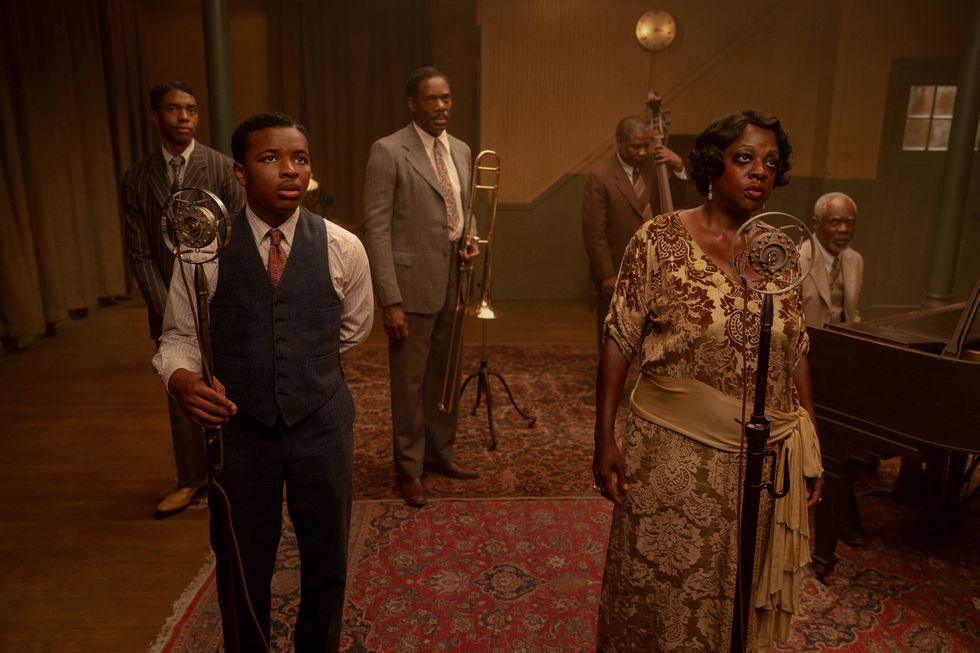
Production design by Mark Ricker; set decoration by Karen O'Hara and Diana Stoughton.
Although George C. Wolfe’s adaptation of August Wilson’s 1982 play Ma Rainey's Black Bottom is a vignette of the music scene of the Roaring ’20s, glitz and glamour are far from what Ma Rainey (Viola Davis), ‘‘Queen of the Blues,’’ and her band (Chadwick Boseman, Coleman Domingo, Michael Potts, and Glynn Turman) experience in Chicago, as the singer fights for control over her music in a time of racial prejudices and injustices.
The film is set in Chicago but was actually filmed in Wilson’s hometown of Pittsburgh, so production designer Mark Ricker had some studying to do to get all the details of a 1920s-era Windy City right and ready for action.
Ricker was able to find the perfect location for the recording studio fitting Wolfe’s description: “a fantastic small vaudeville Victorian theater,” according to production notes. Unfortunately, a few days before shooting, that location fell through, so Ricker and his team built a studio on a soundstage. In the end the mishap worked in their favor, as they were able to add details that they wouldn’t have in the other location.
A huge part of the film was the claustrophobic atmosphere and heat the characters were feeling (indoors and outdoors) that, in turn, would make viewers uncomfortable. The design of a basement rehearsal room was especially crucial. Although Wolfe pictured a windowless room, Ricker and the cinematographer, Tobias Schliessler, decided to add one window to display the source of the heat and add a temporal quality. “We were literally going to track the light moving over the course of the film, and we’re very cognizant of the light as it pertains to the heat on this hot day in July in Chicago in 1927,” Ricker noted.
Mank

Production design by Donald Graham Burt; set decoration by Jan Pascale.
David Fincher's Mank is based on screenwriter Herman Mankiewicz’s (portrayed by Gary Oldman) time writing the script for the iconic film Citizen Kane. Coming in with 10 nominations, Mank is one of the most buzzed-about films of the year. Production designer Donald Graham Burt and Fincher have been working together since Zodiac (2007) and are clearly a winning combination. They’ve collaborated on Academy Award–nominated films (and winners) such as The Curious Case of Benjamin Button (2008), The Social Network (2010), and The Girl with the Dragon Tattoo (2011).
For Mank, Graham Burt had to create authentic sets to accurately convey the Golden Age of Hollywood and think about how the sets photographed in black and white. ‘‘There was certainly a learning curve in approaching the black-and-white aspect of the film,’’ Graham Burt told ELLE Decor in an e-mail. ‘‘We couldn’t scenic the interiors in tones of orange and green merely because it photographed well, as it would be too jarring and distracting to the actors and take away from the reality we were attempting to portray. We developed a language of colors that, combined with glazes, functioned to keep the sets feeling real while also lending themselves to the richness of the black and white.’’
If you asked the designer what the most challenging part was, it would be recreating the Hearst Castle, formerly called the San Simeon estate, where the lavish parties were set. Since filming was not allowed on the estate, Graham Burt was left with two options: scout similar-looking locations or recreate the famous structure. He went with the latter and managed to build it on a soundstage in eight weeks. The castle emulated many different architectural styles, among them, Spanish Colonial, Classical, and Gothic. But the most illuminating insights for a dining scene came from Hearst Castle Fare, a vintage cookbook. “It had details about gatherings, table arrangements, place settings, furnishings, drink menus, and food menus,” he shares in a statement.
For Mank’s other location, North Verde Ranch (now called Kemper Campbell Ranch), where Mankiewicz was sent to write Citizen Kane, the team was thankfully granted an original for exterior shots, but had to devise the interiors themselves. They wanted to capture the vibe of a ‘‘dusty, desert bungalow where there was always the presence of a bright desert light outside.’’ Graham Burt continued. “It was important for Mankiewicz to feel sequestered and remote in a simpler environment.’’
News of the World
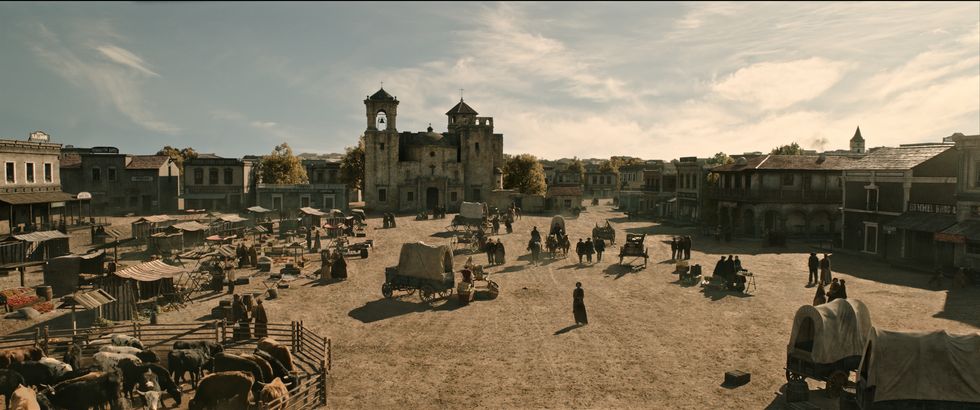
Production design by David Crank; set decoration by Elizabeth Keenan.
Left with nothing after the Civil War, veteran Captain Kidd (Tom Hanks) finds meaning in delivering the ‘‘news of the world’’ from town to town when he meets a young girl, Johanna (Helena Zengel), who was kidnapped from her family. His purpose shifts to getting Johanna home.
Though the western, directed by Paul Greengrass, was shot in Santa Fe, production designer David Crank—working with set decorator Elizabeth Keenan and art directors Natasha Gerasimova and Billy Ray—recreated parts of various towns in Texas, including Wichita Falls, Red River Station, Dallas, and a fictional town called Durand. And though it was Crank’s first-ever western, it turned out to be a masterpiece. “I was most keen to convey how sparse and unadorned life was in the South at this moment in history, five years after the end of the American Civil War,” Crank shared with us in an e-mail. “The story is about many things, but the fracture and the isolation of people that the war left was foremost in my mind. Comfort was something everyone in 1870 was searching for on some level, and we wanted to show how basic the life was that people were trying to make sense of and improve.”
A lot of research and planning went into the sets, and Crank began by going through photographs, etchings, maps, writings, and paintings. The team gathered information anywhere they could, from the Library of Congress to the Oakland Museum. “What one wants are references that are as specific as possible to your story,” he said. “It is never as interesting to portray life as we assume it must have been, but rather to try to show as it as close as possible to what it was.”
Crank and his team didn’t have to build the whole set from the ground up because the town’s buildings worked perfectly. “The town’s exteriors, the interiors, and the vast landscapes were all equally important to telling the story of the journey across central Texas,” Crank said. “With all three, we had to determine how each propelled the story. For us, that was always through the use of specific details.”
Tenet
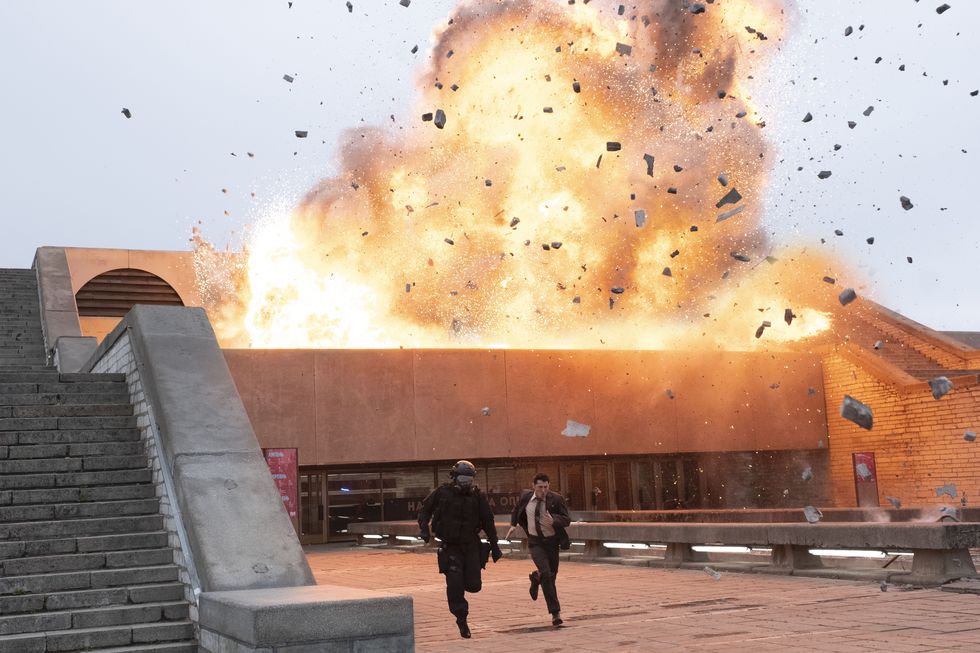
Production design by Nathan Crowley; set decoration by Kathy Lucas.
Saving the entire world from WWIII is in the hands of a character— simply known as the Protagonist (John David Washington)—through time travel. Like Mank’s Donald Graham Burt and David Fincher, production designer Nathan Crowley and director Christopher Nolan have collaborated on previous Oscar-winning films such as Interstellar (2014) for Best Visual Effects and Dunkirk (2017) for Best Picture.
Nolan, known for his large-scale productions, didn't hold back for this action/thriller, and neither did Crowley (no surprise, considering this nomination marks the designer’s sixth). The designer loves a good challenge, and he was definitely put to the test. As the story is about a time-traveling agent, it wasn’t filmed on a stage, but on location in multiple different countries, including Estonia, where they filmed the real-life car-chase scene.
For Nolan and Crowley, shooting on location in other countries would be a no-brainer, especially for this travel-filled film. “We find when we shoot on a soundstage, we lose the energy, and a film like this needs a massive amount of energy,” Crowley told Variety.
One of the biggest “props’’ they had to get was a real Boeing 747 plane, which Nolan drove into a set that Crowley had built. In the Variety interview, Crowley recalled, “That sequence didn’t really bother me.” He added, “We work well together because we push each other on design.”
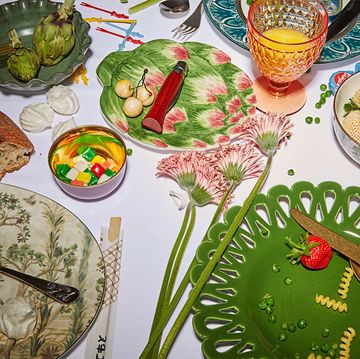
The Best New Tableware for Entertaining with Style
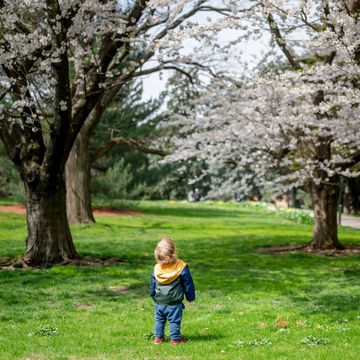
The Best NYC Museums Where Kids Can Get in Free
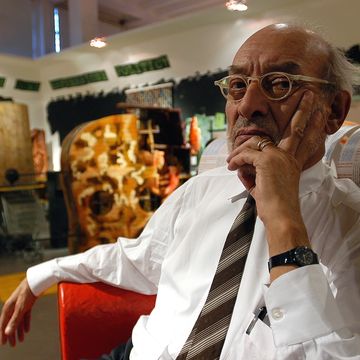
Italian Design Master Gaetano Pesce Dies at 84
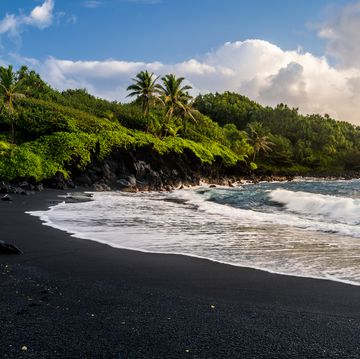
20 Breathtaking Black Sand Beaches
